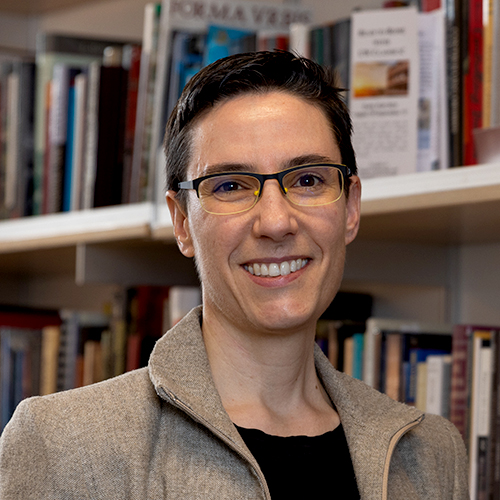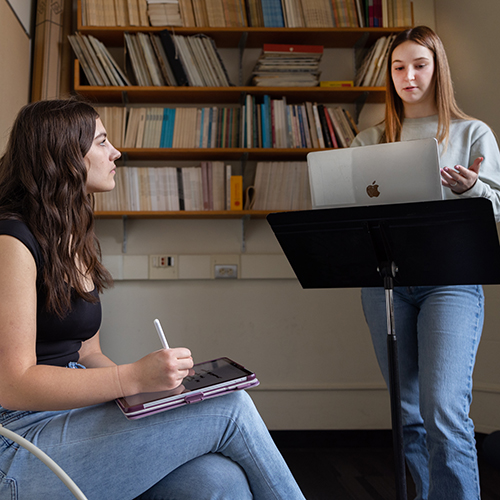Since the arrival of COVID-19, workers in fields from health care to meat processing to grocery sales have been deemed essential. Many other workers have been furloughed or have lost jobs. What are the labor challenges and implications of this moment? Perspectives asked two faculty at the UW’s Harry Bridges Center for Labor Studies: Kim England, professor of geography and the Harry Bridges Chair in Labor Studies, and Carrie Freshour, assistant professor of geography and Bridges Center faculty associate. England focuses on domestic workers; Freshour studies the poultry processing industry.
What labor issues did the COVID-19 pandemic immediately raise for you?
Kim England: An initial concern was workplace safety for health care workers. And then when this category of “essential worker” emerged, it led to confusion about who is considered an essential worker. The feds created a list of “essential infrastructure workers,” which some states followed while others, like the state of Washington, created their own guidelines.
Then there’s been the question of what institutions are responsible for essential workers, a disproportionate number of whom are women, BIPOC [Black, Indigenous, and people of color], and immigrants. Should PPE [personal protective equipment] be provided by the employer or the worker? Who should be paying for things like hazard pay? Is it the state? Is it the employer? And now there’s a concern that any sort of additional layers of funding, like hazard pay, are being shut off.

Carrie Freshour: We also immediately heard about workers having their hours cut or being furloughed or laid off. So we were trying to parse out what that really meant and what resources were available — unemployment or short-term benefits or even workers’ compensation for some workers — and whether the workers had union representation.
What about worker safety in the industries each of you study?
England: Nannies and cleaners early on expressed fear for their health and concern about access to PPE. After all, their workplace is someone else’s home. In the nursing home and long term care sector, people are rightly alarmed by the astonishing number of residents who have died, but there's been less awareness of the really high infection rates and deaths among nursing home workers. The media and now health sciences journals are filled with stories about a lack of PPE in nursing homes and hospitals. Initially masks weren’t always encouraged, and then FEMA's priority was hospitals. Nursing homes were told their turn would come later. By June, a federal agency report revealed at least 1,000 nursing homes had no or very few surgical masks, and thousands of others had a limited supply.
It's pretty phenomenal, the lack of power these workers have and how they've been devalued in this country more generally.
Freshour: In meat and poultry processing plants there have been cluster outbreaks of COVID-19, which is a reflection of not just the close proximity in which people are housed together and working together, but also a larger devaluation of those people and places. Poultry plants and meat processing are framed as jobs that “Americans don’t want,” so they draw on a majority Black and Brown workforce, some of whom are undocumented or underdocumented. The government has kept meat and poultry processing plants open despite high rates of infection, despite workers dying from COVID-19. It's pretty phenomenal, the lack of power these workers have and how they've been devalued in this country more generally.
Do they have any recourse?
Freshour: The labor movement has really declined over the past half century, and some regions are worse than others. Non-unionized plants have a much more difficult time making demands on the employer than unionized plants. Workers without unions struggle to self-organize in this moment. Even where there are unions, Right to Work laws across the country have weakened them. Right to Work sounds really nice, but what it really means is that when a union attempts to organize a workplace, even if it wins enough votes to start the contract with the employer, not all members have to be part of the union.
England: More broadly, there has historically been a social accord between workers, companies, and the government. You can think of it as a triangle. Workers were protected and well paid so they could be good consumers, which then benefited companies. But the shape of the triangle has changed. It is now unbalanced. It's not in favor of workers. In my research on care workers, I’ve found home care companies are making tons of money, but home care workers themselves are incredibly poorly paid. Their wages have stagnated in the last 15 years. In addition there has been a trend to have some groups of workers classified — I should say misclassified — as independent contractors, which would mean those workers would not be covered by labor protections such as unemployment benefits, overtime pay, and paid vacation. One thing that governments could do is to make it harder to classify workers that way. In fact the City of Seattle has moved in that direction.

Given the changing shape of the worker/company/government triangle, what can workers do?
Freshour: One positive outcome of this COVID situation is that it has given visibility to workers in industries that Americans have not cared much about until this moment. Workers have been organizing. Some of the earliest strikes happened in the rural South at Tyson Foods processing plants. There have also been transit worker strikes and organizing by home care workers. I think what all these workers are also doing is demanding dignity and rights, drawing attention to their work and what they provide our society that has been long undervalued.
England: Yes, we’ve become more aware of essential workers, and now is a moment to shift the needle on that undervaluing and gain better protections for all workers. I am inspired by the activism of domestic workers. They came together to create a new round of worker movements and sustained organizing, which is ongoing. Their action produced Domestic Workers Bill of Rights in nine states, as well as in Seattle and Philadelphia. They have gained important labor rights and remarkable visibility — impressive for an occupation with a history of being devalued and hidden behind the doors of private homes.
While COVID has shined a light on these labor issues, recent police brutality has shined a light on racial injustice. Do you see a connection between labor and race issues?
Freshour: There's a huge connection, since working-class people of color are among the most affected by unfair labor practices. This has been a moment for labor to connect with the movement for Black lives. We're seeing that across the country. In Seattle specifically, some groups that organized for essential workers with the coronavirus outbreak are connecting this work to the movement for Black lives. Recently, the International Longshore and Warehouse Union (ILWU) marched for Black lives in Seattle, connecting their labor at the ports to the overpolicing and incarceration of Black communities and other inequities that the Black Lives Matter movement is fighting against. In that sense, there are some really beautiful connections that are emerging out of this moment that Kim and I are excited about, despite all the disasters.
England: The ILWU has been around for a century, and Harry Bridges and other ILWU leaders saw that discrimination was a tactic of bosses to divide the working classes. The ILWU has always had a pretty solid sense that “workers” means all workers, not just white workers. Unlike many other unions, it has always been strong on anti-racism, though they did not necessarily call it that in the beginning!
I would add that previous pandemics were followed by a period of increased economic inequality because of how jobs were affected. We are desperate for that not to be the case after this one. We have to work to make sure that that history doesn't repeat itself. Can we learn from the past, please?
. . .
For more information, visit the Bridges Center’s Labor Responds to COVID-19 webpage.
The Harry Bridges Center for Labor Studies is committed to developing labor studies as an interdisciplinary field. The Center cultivates connections with labor communities locally and around the world, and informs policymakers about issues confronting workers. Private gifts to the Center make possible new courses, research projects, scholarships, and internship opportunities for students.
More Stories

Lifting Marginalized Voices — from Ancient Rome
"Interesting, frustrating, and necessary,” is how Sarah Levin-Richardson, professor of Classics, describes her research into the lives of enslaved individuals in the ancient world.

The Truth About Public Speaking
Becoming an effective public speaker requires planning and practice. Professor Matt McGarrity and consultants at the UW Center for Speech & Debate are available to help.

A Closer Look at Teens & Digital Technology
The impact of digital technology on teens' mental health is the focus of a new course developed by Lucia Magis-Weinberg in the UW Department of Psychology.